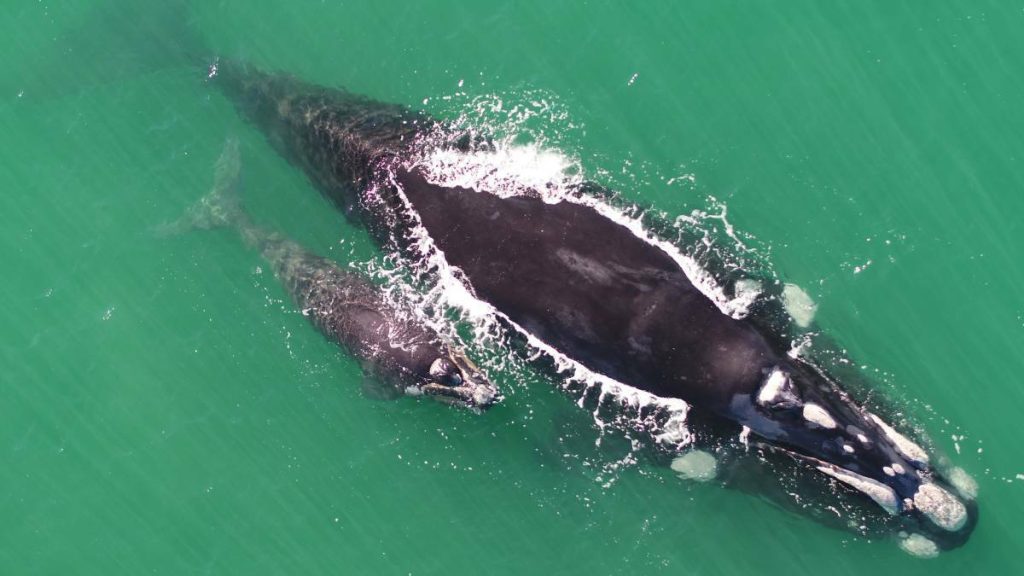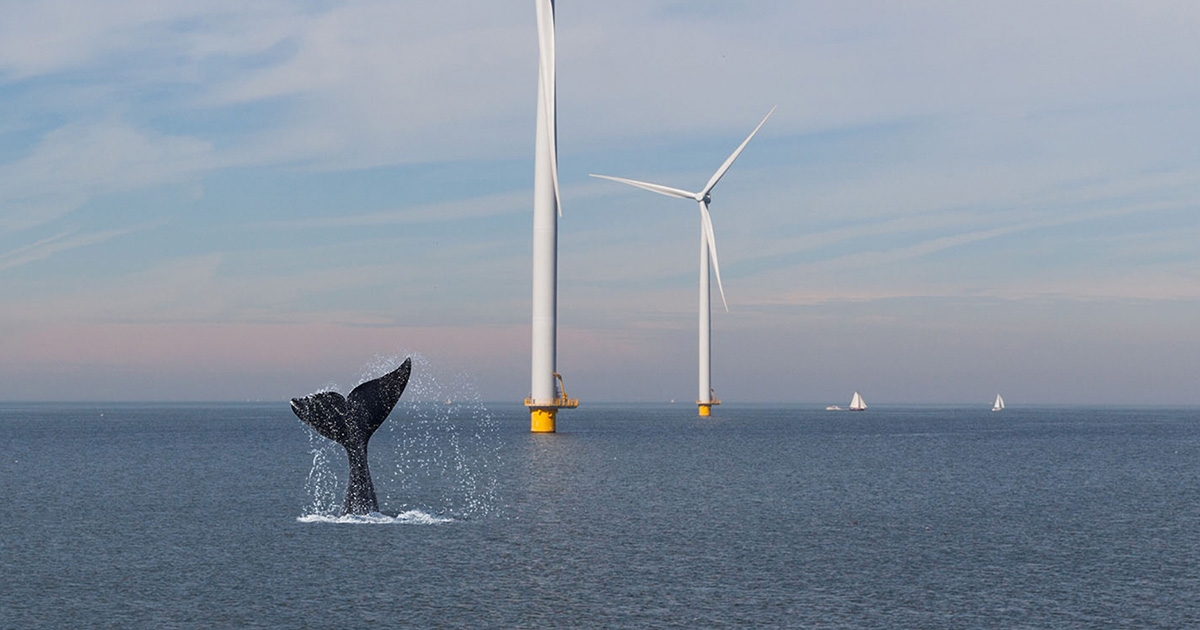In a crucial move, two federal environmental agencies, the U.S. Bureau of Ocean Energy Management (BOEM) and the National Oceanic and Atmospheric Administration (NOAA), released finalized plans on Thursday to enhance the protection of endangered North American right whales. With only approximately 360 of these majestic creatures remaining worldwide, the agencies aim to address potential risks posed by the escalating number of offshore wind farm projects, particularly along the U.S. East Coast.
To mitigate adverse impacts, the strategy employs cutting-edge technology, including artificial intelligence and passive acoustic monitoring, to track the whales’ locations and assess the effects of wind development on their habitat. Key elements of the plan include avoiding offshore wind leases in areas with potential major impacts on right whales, establishing noise limits during construction, and prioritizing the development of quieter technology for offshore wind operations.
The agencies also underscored their commitment to conduct robust sound field verification of offshore wind operations to ensure that noise levels align with expectations. This comprehensive approach aims to strike a balance between renewable energy goals and the preservation of endangered species.
Interestingly, this significant announcement coincided with offshore wind developers Equinor and BP unveiling a lease swap agreement for projects in New York and Massachusetts. Equinor will assume full ownership of the Empire Wind lease, while BP will take control of the Beacon Wind lease. Despite Equinor facing a loss of approximately $200 million, both companies emphasized the swap as a “cash-neutral transaction.”

Read more:
- Neglect of HIV-positive inmate’s health alleged in California jail, says lawsuit
- Danger to AI innovation from state and local involvement
- Hochul sidesteps ‘Under the Hood’ test amid school bus driver shortfall
- $300K Fine Imposed on NY Midwife for Fake Vaccine Fraud
While opponents of offshore wind projects have raised concerns about their potential impact on whale populations, the agencies maintain that climate change poses the most significant threat to right whales. They highlight that there is no conclusive evidence linking offshore wind preparation work to whale deaths, attributing many incidents to ship strikes and entanglement in fishing gear.
In a joint statement, the agencies emphasized, “Climate change is affecting every aspect of right whales’ survival, changing their ocean habitat, their migratory patterns, the location and availability of their prey, and even their risk of becoming entangled in fishing gear or being struck by vessels.”
Recent statistics from NOAA indicate a slight decrease in large whale entanglements nationwide in 2022, reinforcing the agencies’ stance that offshore wind preparations are not a primary contributor to whale mortality.
As of September 2023, there were 30 offshore wind lease areas along the East Coast, with 18 of them having submitted construction and operations plans to BOEM. While these projects predominantly utilize fixed foundation turbines, future leasing plans envision the incorporation of floating technology farther offshore.
This coordinated effort by federal agencies and the strategic use of technology represent a pivotal step toward ensuring the coexistence of renewable energy initiatives and the preservation of endangered marine species.

